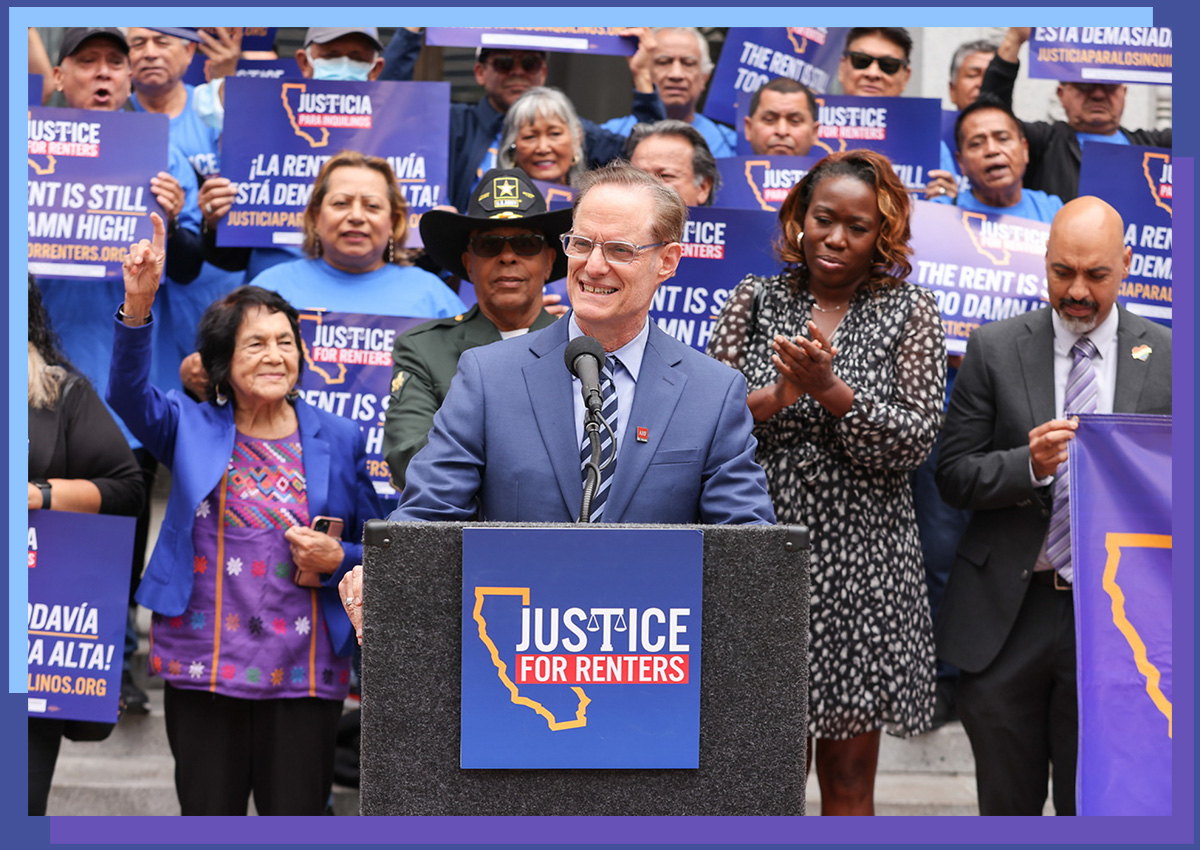Apartment industry leaders say they’ll need to spend $150 million for the best shot at defeating Proposition 33, which would allow local municipalities across the state to set their own rent control regulations.
But with the election about five weeks away, and only about $66 million raised so far, California Apartment Association CEO Tom Bannon said hitting that goal is unlikely.
“The market today is not the greatest and our ability to raise $150 million — I don’t see that happening,” he said at a panel discussion on the subject at the Marcus & Millichap Northern California Multifamily Forum last week, adding that $120 million to $125 million is probably more likely.
The 1995 Costa-Hawkins Rental Housing Act exempts single-family homes and rental units built after 1995 from local rent control laws, and disallows local vacancy control regulations, which means a rent-controlled unit can return to market rate on turnover. Prop. 33 would repeal Costa-Hawkins, allowing cities to implement their own versions of rent control.
Supporters of 33 have spent $38.5 million of the $40 million raised thus far, according to state campaign finance information through Sept. 26. All but $600,000 of that amount came from the AIDS Healthcare Foundation, an L.A.-based nonprofit that provides low-cost prescriptions using the federal discount drug program Medi-Cal Rx, and is also a major owner/operator of affordable housing in Los Angeles. This is the organization’s third attempt in the last four years at overturning the state law that keeps local governments from being able to enact vacancy control and rent control on newer construction.
Those against the measure had spent $37 million of the $66 million raised by Sept. 26, with $34.45 million coming from the California Apartment Association, $22 million from the California Association of Realtors and $5 million from the National Association of Realtors, according to campaign finance figures.
The industry spent about $45 million to defeat Prop. 10, the first iteration of Prop. 33, back in 2020 while the AHF spent about $20 million, Bannon said, essentially running two ads against the measure for every one for it. In 2022, another $75 million went into defeating the next attempt, Prop. 21, while proponents spent about $45 million. This year he anticipates proponents could spend up to $100 million to make sure the third time’s the charm, which means the industry will have to spend even more to counter that offensive, given that polling shows 60 percent of likely voters support rent control.
“We have to spend a lot more money to make certain that we get our message out over their message,” he said.
The results for the industry if Prop. 33 were to pass would be disastrous for renters and developers as it would further disincentivize multifamily production in the state, industry leaders said. Rent control has broad public support only because people don’t fully understand its negative implications on the housing affordability crisis, said the National Multifamily Housing Council’s Jim Lapides, who also spoke on the panel.
“It’s just a terrible idea,” Lapides said. “It costs millions of dollars to implement, in addition to destroying the market, losing tens if not hundreds of millions of dollars in property taxes annually that could be serving the interests of the state and actually helping to solve this issue. So unfortunately it is the worst possible solution even though it just feels so good for people.”
San Francisco’s Land Use Committee is already sending legislation to the Board of Supervisors this month that would put newer buildings under rent control as soon as Prop. 33 passes. Currently, only San Francisco buildings built before June 1979, which covers most but not all of the multifamily housing stock in the city, are under rent control. Other cities will quickly follow suit, Bannon said, and possibly other states as well.
“You will have many, many cities doing similar things and it goes beyond California,” Bannon said. “If we lose Prop. 33, I think you could expect to see other states like Washington State, Colorado, Massachusetts and other blue states look to do the same thing. So this is a risk in California, but it’s certainly a risk well beyond California.”
Recent polling shows how difficult the battle against 33 will be, with a poll from the Public Institute of California last month revealing that only 3 percent of voters are still undecided, with 51 percent in favor and 46 percent opposed.
The window to reach undecided voters or convert “yes” voters into “nos” is closing, given that mail-in voting begins soon and Democrats tend to vote earlier than Republicans, according to Bannon. No on 33 ads targeting members of both parties are already out with specialized messages likely to resonate with each group, he said.
“We aren’t taking our foot off the gas,” said No on 33 spokesperson Nathan Click via email. “We are confident that Prop. 33 can be defeated, but only if we are able to communicate to Californians just how harmful its passage would be — for people trying to find rental units, for communities that face a severe homelessness and housing crisis, for homeowners and veterans.”
A campaign that can “reach every voter” in a state of 40 million people takes “significant resources,” especially when the AHF has already spent nearly $40 million on what Click called “false ads.”
That’s why the industry is also supporting Proposition 34, which would require the foundation to spend 98 percent of its revenues on direct patient care, thereby cutting off the funding spigot for future attempts to undo Costa Hawkins. CAA has donated nearly $30 million to Prop. 34, and had spent about $25 million of that as of Sept. 36, according to campaign finance records.
“This time we’ve gone on offense,” said Barry Altschuler of Equity Residential at the panel discussion.
He advocated that owners give $250 per unit owned in California to support both campaigns.
“We must defeat Prop. 33 but it would be incredibly helpful for our industry to pass Prop. 34 as well — and all of this takes money,” he said.
Read more



